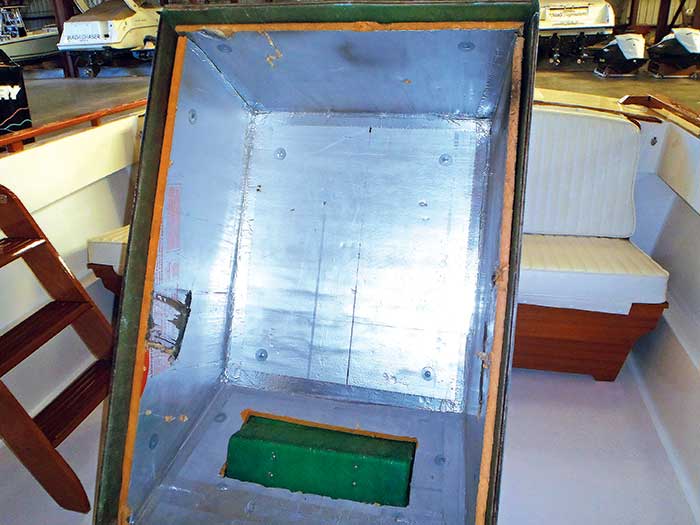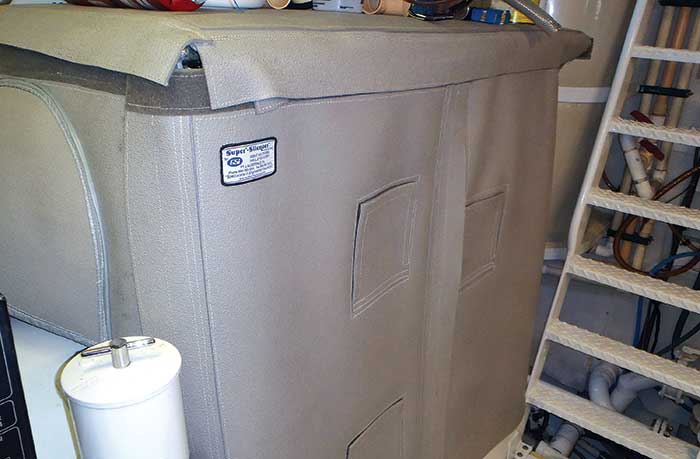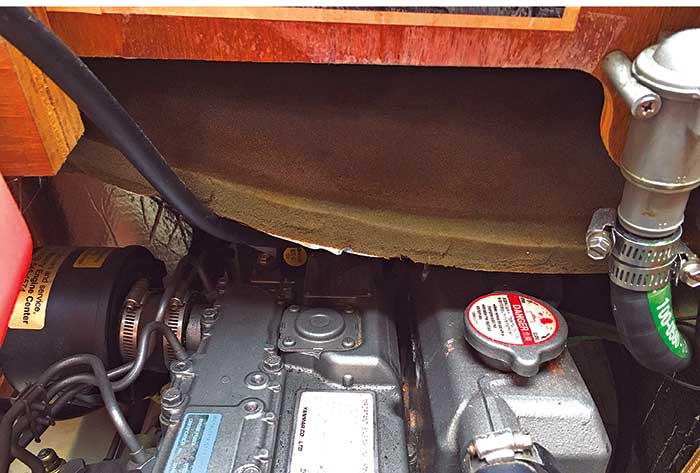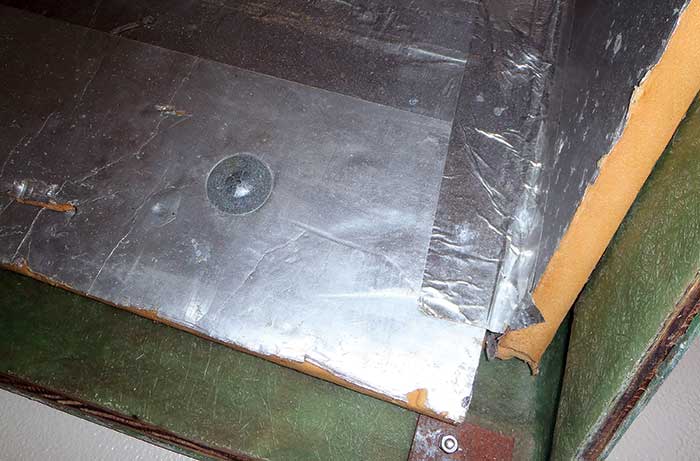Advertisement
Save your voice and regain your floating peaceful refuge by adding soundproofing to your engine and generator.

The best strategy to address noise is by containing it at the source, a good example being the insulation inside this engine cover.
Time spent on the water should be relaxing. But that can be difficult when you have to scream over engine or generator noise during conversations or are left lying awake at night listening to the melodious hum of an air conditioning unit. Installing soundproofing can make a huge difference in onboard noise reduction. Here's how to transform the hullabaloo of your boat into the peace and tranquility of a floating Zen garden.
The best way to combat noise is by containing it at the source — within an engine compartment, for example. Soundproofing is perfect for this application, and while not fireproof, it is typically fire-retardant up to around 225 F.
Installation of a good quality foam soundproofing barrier can reduce engine noise by 10 to 35 decibels (about 65%). Soundproofing material is available in a wide variety of forms, from sprays and paints to foil-backed foam panels. Foam panels are a popular choice and one that's very effective against airborne noise pollution.

Soft sound shields, such as this one from GSI (stopthesound.com), provide both installation flexibility and significant noise reduction.
Self-adhesive panels are easy to install (just peel and stick), but you have to plan and position them exactly where you want them the first try as you typically can't reposition them without damaging the foam. Panels without adhesive backing require spray- or brush-on contact adhesives, which may allow a bit of last-minute repositioning, making them easier to work with in tight spaces.

Regardless of adhesives used, overhead panels require additional support from mechanical fasteners.
Regardless of the adhesives used, panels also require the use of mechanical fasteners (such as screws and fender washers) particularly for overhead horizontal installations.
Soundproofing panels can be cut to shape with a box cutter or razor knife, however a serrated knife blade will provide a cleaner cut of the foam material itself. Thin sheets of soundproofing material can also be cut with a pair of good quality scissors. To ensure the best fit (and avoid cutting snafus) make cardboard templates first to check fit and for use as a cutting guide. Be sure to dry fit everything prior to applying adhesives or peeling self-adhesive panels.

Use joining tape to seal and prevent sound "leaks" at panel joints.
When planning your installation, remember that sound flows like water, meaning you'll want to use Mylar seal or joining tape (typically provided by the manufacturer) to prevent "leaks" at panel joints. Cables and hoses penetrating the material should be sealed using tight-fitting rubber grommets, while access hatches should close snugly with a good, tight seal.
Tip
That said, any soundproofing installation must provide adequate ventilation for the engine. Required vents and air holes can be quieted using air baffles. It's not realistic to expect all noise to be eliminated once soundproofing is installed, but when done correctly, you should be able to carry on a conversation at normal volume levels. After all, who wants to yell when you are trying to relax?
Soundproofing Installation Tips
- Read all instructions for the soundproofing, adhesives, and mounting hardware prior to starting your project.
- Make templates to check fit prior to cutting panels. Be sure to allow for material thickness at corners.
- Ensure your installation provides adequate ventilation and keeps insulation material above bilge water levels. (Avoid exposure to any wet areas.)
- Provide a minimum clearance of 6 inches between soundproofing and engine or generator exhaust manifolds.
- Use sharp tools when cutting soundproofing, both to produce clean cuts and to avoid tearing of reflective foil. The foil or silver facing side should face upward when cutting.
- Handle soundproofing material carefully. Avoid folding the material back on itself, which can result in creasing.
- Seal all exposed edges, joints, and corners with Mylar seam tape to prevent water or other contaminants (such as fumes or oil) from entering and degrading the soundproofing material. Seam tape can also be used to provide chafe protection at wear points. You can purchase it at most marine stores.
- Don't rely on adhesives alone. Use fasteners and fender washers where appropriate (all overhead and vertical surfaces) to ensure backup in the event of adhesive failure.
- Apply adhesive for and install one panel at a time. Install the top panel first, which lets adjacent vertical panels provide support to the outer edges of the top panel.
